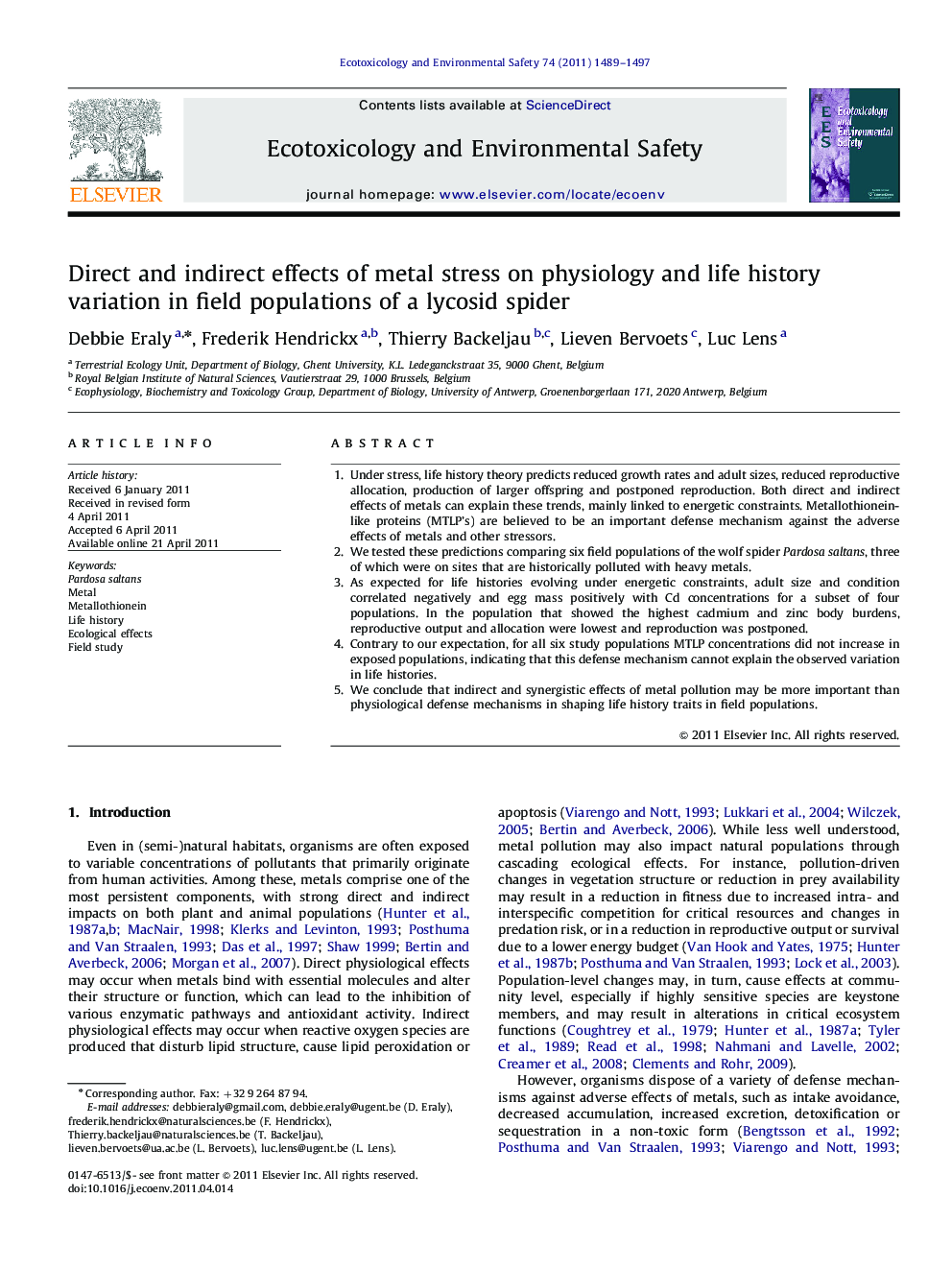| Article ID | Journal | Published Year | Pages | File Type |
|---|---|---|---|---|
| 4421078 | Ecotoxicology and Environmental Safety | 2011 | 9 Pages |
1.Under stress, life history theory predicts reduced growth rates and adult sizes, reduced reproductive allocation, production of larger offspring and postponed reproduction. Both direct and indirect effects of metals can explain these trends, mainly linked to energetic constraints. Metallothionein-like proteins (MTLP’s) are believed to be an important defense mechanism against the adverse effects of metals and other stressors.2.We tested these predictions comparing six field populations of the wolf spider Pardosa saltans, three of which were on sites that are historically polluted with heavy metals.3.As expected for life histories evolving under energetic constraints, adult size and condition correlated negatively and egg mass positively with Cd concentrations for a subset of four populations. In the population that showed the highest cadmium and zinc body burdens, reproductive output and allocation were lowest and reproduction was postponed.4.Contrary to our expectation, for all six study populations MTLP concentrations did not increase in exposed populations, indicating that this defense mechanism cannot explain the observed variation in life histories.5.We conclude that indirect and synergistic effects of metal pollution may be more important than physiological defense mechanisms in shaping life history traits in field populations.
